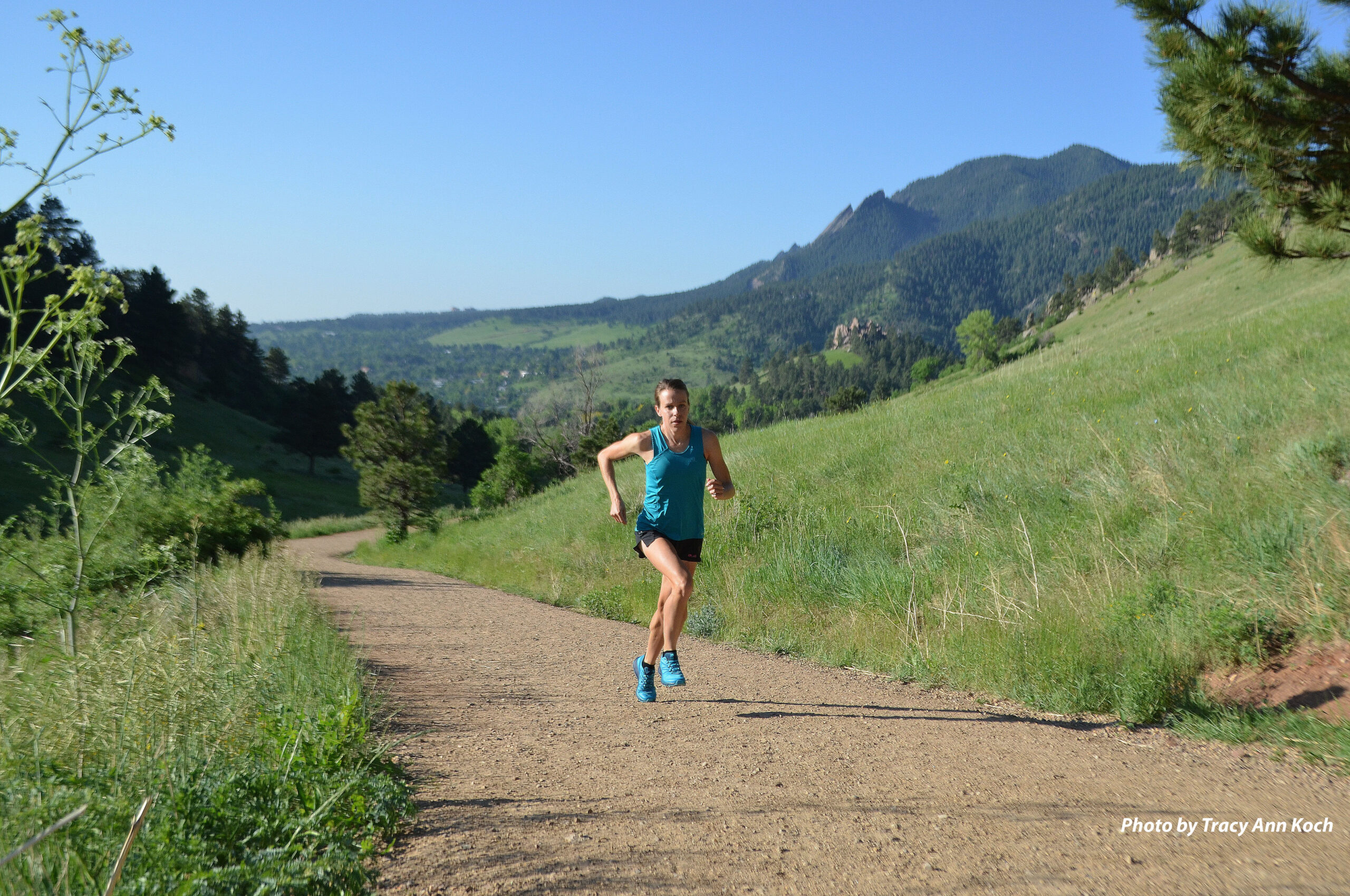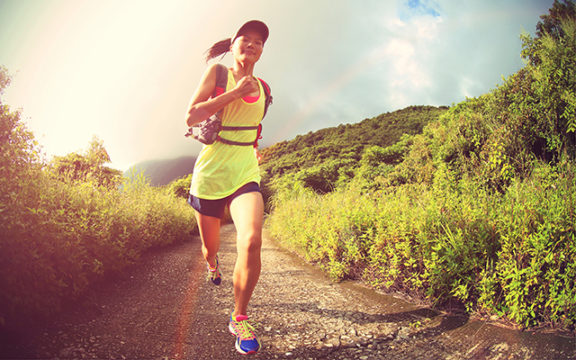Trail Time: Preparing to Race the Leadville Trail Marathon & Heavy Half
By Sandy Bikus
Whether you’re coming to the trail from road running, or you’re a regular on the trail but this is your first time racing, I’m here with some suggestions to get your body ready for the unique situations posed by trail racing.
Racing trail is full of surprises and offers amazing opportunities and challenges. Often trail runners get so wrapped up in accumulating quality miles that they miss out on the complementary training that can make them safer and more efficient on the trail.
“Complementary training” refers to strength training and stabilization exercises. These kinds of exercises can seem pointless, but they are an investment that can reduce injury and lead to longer and faster running. Aligned strong movement patterns can also help us to recover more quickly. We demand a lot from our bodies with power movements, ultra-long distances and intense racing conditions, so we have to make a “deposit” to our bodies to ensure longevity and vitality.
With the first Leadville Race Series trail race just two-and-a-half months away, now is the time to get started!
Strength training is any weight-bearing exercise that recruits muscle fibers and stimulates the growth of our energy powerhouses known as mitochondria. The best strength training for runners includes exercises that involve the kinds of movement patterns that will help propel the running motion, such as single-leg squats or walking lunges. Strength exercises that activate the glute are also important; strong glutes assist the kinetic chain of hip, knee and ankle, and significantly reduce the incidence of injury.
As you approach your taper period, it’s best to cut out any posterior-focused (glute, hamstring, etc.) strength exercises. Stick with tapering your running, resting, stretching, maintaining your established stabilization exercises (below), and dialing up your nutrition.
Stabilization training engages the fascia, ligaments and tendons in order to support the primary running muscles (the glutes, hamstrings, quads, etc.). These are helpful to a runner in training, as well as to one recovering from an injury. Exercises can include barefoot running drills on grass or sand, and balancing and reaching while in a one-legged stance.
Try this sample stabilization exercise I give my athletes:
Square up the hips and ankles, with your knees and feet forward. Use one leg as an anchor, then lift the other leg up off the floor, and balance for 20 seconds or so. Find a focal point to help maintain balance. If that’s too easy, try closing your eyes. Progress to doing this exercise on a blue foam pad (such as an Airex Balance Pad) or a Bosu Balance Trainer. Try with and without shoes. This will keep challenging those ligaments and connective tissues to search for stability.
Work this type of exercise into your weekly routine 2x week alongside your strength exercises or on your recovery/rest day.
Stabilization exercises can be done all the way to your race. The key is to not change or add anything new in the last couple weeks or even the month prior to your event. It’s not worth risking sabotaging your event.
My hope is that we all come to the trail feeling light and smooth. After all, when we feel good we do more of what we love.
Embrace the race!
Sandy Bikus is a USA Triathlon 1 Level Certified Coach, Life Time Run Certified Coach and a NASM Certified Personal Trainer.


